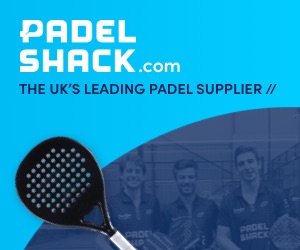Have you ever felt pain in your shoulder when you hit a smash? Have you ever had to quit a match because of elbow discomfort or a calf strain? If so, you may want to know why this happened to you. If not, you need to know how to avoid it.
To find out these answers, we’ve enlisted the advice of two experts in the field – Ferran Abat and Ángel Bigas.
Abat is a sports traumatologist and heads up the medical team of Agustín Tapia, No.1 player in the World Padel Tour rankings. He reviews the main injuries that arise from playing padel at amateur level:
“The most common injury is tendinitis (inflammation of the tendons) in the elbow (called epicondylitis), in the shoulder (in the area of the rotator cuff and supraspinatus) and in the Achilles tendon,” he says
“The first two are caused by bad movements when hitting the ball or by overloading the tendons. The Achilles injury is caused by players continually doing skipping movements and standing on their tiptoes in order to react faster on court.
“We also find muscular injuries that appear due to poor physical conditioning or overloading. The famous ‘whiplash’ that occurs in a calf when a player runs to the net after doing a chiquita is a clear example.”

The prestigious specialist warns that these injuries can start as minor but players must be careful not to let them become chronic:
“The problem is that, both in the professional and amateur sphere, they are injuries that start to bother the tendon a little bit because you are overloaded with matches. It’s a pain that comes and goes. Some days you have more, some days you have less; if you play demanding matches you have more, but if they are softer you have less.
“What usually happens in patients is that they prolong the pain over a long period of time. There are people who come to my clinic saying that their shoulder or elbow has been hurting for years.
“Inflammations in the tendons are not important. There is no problem if a patient has epicondylitis (inflammation in the tendons of the elbow). But if it goes untreated and the inflammation is prolonged over time, it becomes a chronic injury (epicondylosis), which means that the tissue has degenerated or that there are ruptures in that tendon that make it not only impossible to hit the ball hard, but even to hit it at all.”
In this sense, Abat recommends that amateur and professional players do preventive work, see a physiotherapist if they are in pain and play padel without fear, as it is a sport with a similar injury rate to others such as tennis.
Ángel Bigas, a well-known specialist in Sports Medicine and Traumatology who runs ‘La Clínica del Pádel’ in Barcelona, focuses on three factors in order to prevent injuries: the equipment we use, our physical condition and nutrition:
“Before playing, you have to get advice. You shouldn’t buy the most beautiful racket or the one your favourite player uses. Talk to a coach or the shop’s technician beforehand to find out which one would suit you best for your type of game or the weight of the racket, among other factors.
“General fitness is also very important. You shouldn’t use padel to get in shape, but to be in good physical shape and then get on the court. Try to combine padel with other sports one or two days a week in order to have good general muscular condition. In padel, the legs are very important. If we don’t reach the ball well, we won’t hit it well, our muscles will suffer and injuries will occur.
“It is essential to warm up and stretch before and after playing. It is also important to nourish and hydrate yourself. Water is the best ointment for tendons, muscles and joints. In summer, as we sweat a lot more, we can add mineral salts to it.
“We shouldn’t wait until we are thirsty to drink, because that means the body is suffering. We have to take advantage of the change of sides during a match to drink water.”
In addition, the experienced doctor theorises that some new padel court surfaces, despite looking good to the gallery, are harmful to health:
“In addition to the most common padel injuries, which occur in the upper body (elbow, shoulders and wrists), there are also foot injuries such as plantar fasciitis and Achilles tendinitis.
“I have a theory that these injuries are caused by the change of carpets that are being made in padel clubs. The surfaces which hide the sand [making them more aesthetic for TV coverage] are very nice but aggressive for the foot, especially when using shoes with the typical herringbone/clay soles.
“On a poorly maintained track and those Tour surfaces, we need a mixed type of sole, which is not as aggressive and allows for good sliding. I recommend using two different types of shoes, or just one pair of mixed shoes. The clay court shoes, you have to take them off!”
Finally, Bigas leaves up in the air the possibility that brands might consider creating rackets for women, which could lead to a reduction in upper body injuries among female players:
“We should consider the possibility of making rackets for girls. Their weight and internal structure should be different from men’s because of their physical qualities. It doesn’t make sense for female players to compete with rackets designed for men.”





































